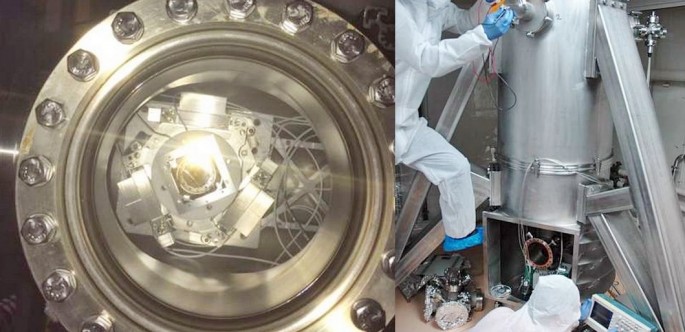Scientists have built a dark energy force detector to test one of the leading candidate theories seeking to explain how dark energy causes the Universe to expand.
Scientists from the Foundation for Fundamental Research on Matter (FOM) and the VU University Amsterdam, both in The Netherlands, designed and built the setup they've named the "Casimir and non-Newtonian force experiment" or Cannex.
Cannex will test a popular candidate theory -- popularly called the "chameleon model" -- that might explain the mechanisms behind dark energy, or the mysterious force that accounts for some 73 percent of the total mass in the Universe. Dark energy can neither be seen nor measured in any direct way -- at least not yet.
One of the most puzzling observations about dark energy is it seems to act with enormous force over the enormous empty spaces in the Universe. It relentlessly pushes the Universe apart but oddly doesn't have any measurable effects on the smaller scale of planets or even solar systems.
Theoretical physicists Justin Khoury and Amanda Weltman, both Americans, formulated what they called the "chameleon model" in 2004 in an attempt to explain this phenomenon.
The propose the existence of a "chameleon field" or a particle that could be responsible for causing the observed accelerated expansion of the Universe while also causing interesting and unexpected local and solar system physics effects that could be observed in purpose built experiments.
Khoury and Weltman suggest the main actor of dark energy is this particle that interacts strongly in a high vacuum while being screened in "denser" environments such as on Earth or the Milky Way.
A recent first test of Cannex revealed it can reach the required sensitivity to measure chameleon interactions. Succeeding tests using Cannex will soon be able to completely rule out or prove the existence of chameleon interactions, thereby helping solve the dark energy conundrum.
In 2010, Khoury and Weltman worked with an international team in The Netherlands to develop a method to detect chameleon interactions.
Their setup consists of two parallel plates. If the density of the medium between these plates changes, there should be a change in the strength of the chameleon interactions, resulting in either a reduction or an increase in the measured force between the plates, said Phys.org.



























